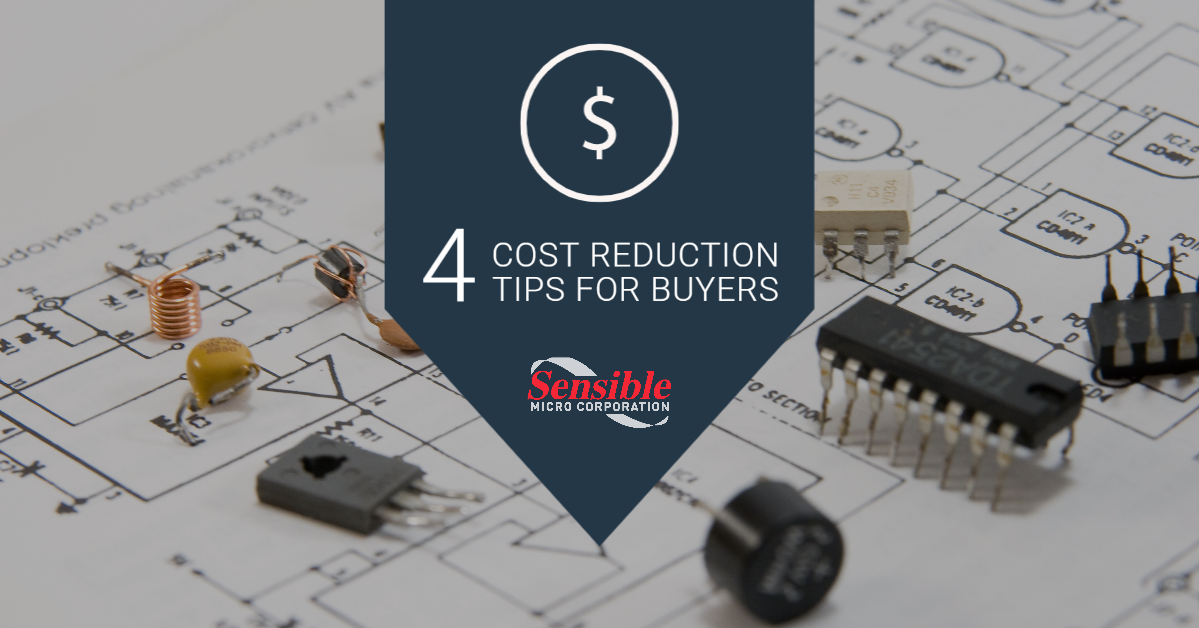The backdrop: An era of shrinking product cycles and volatile component markets. How should an Original Equipment Manufacturer (OEM) handle product lifecycle management (PLM)? Only one thing is for sure. OEMs can’t afford to treat lifecycle planning as a back-office spreadsheet exercise.
Done well, PLM looks like a strategic framework that aligns engineering, procurement, and supply-chain functions from a product’s first schematic all the way through end-of-life (EOL). Done poorly — or not at all — it becomes a silent cost center that bleeds cash, stalls innovation, and exposes the business to supply disruptions it never saw coming.
Let’s walk through the latest product lifecycle trends for a clearer vision of how a disciplined PLM program sets OEMs up for long-term stability. Risks lurk at each step of the process, and supply-chain leaders will want to be backed by robust bill-of-materials (BOM) analytics and proactive EOL planning to translate PLM theory into measurable wins.
1. Market Conditions Have Made PLM No Longer Optional
Gartner estimates that 70 percent of global supply-chain leaders accelerated digital investments in 2024, citing rapid component turnover and mounting resiliency requirements. Many of those investments targeted PLM platforms, and for good reason:
- Shorter lifecycles. The cycle of semiconductor node shrinking continues to accelerate. Leaders like TSMC, Samsung, and Intel have targeted 2nm chips for 2025. It’s estimated that, by 2037, the smallest node side in the semiconductor industry is expected to be down to around 0.5nm. Faster die shrink lifecycles means more frequent obsolescence.
- Compliance pressure. ESG mandates and conflict-mineral regulations demand tighter component traceability.
- Cost of inaction. Unplanned re-spins of discontinued PCBs can cost OEMs thousands (or hundreds of thousands) when such a key part goes obsolete mid-design.
PLM connects the dots by embedding supply-chain intelligence inside the product record itself — so sourcing, engineering, and quality teams stay in lockstep as the market shifts.
2. Risks Abound Across the Four Product Lifecycle Stages
|
Stage |
Primary Goal |
Hidden Risk |
PLM Best Practice |
|
Introduction |
Speed to market |
Over-specifying parts that will be EOL within 18 months |
Early BOM analysis against lifecycle databases |
|
Growth |
Scale production |
Capacity bottlenecks at single-source suppliers |
Dual sourcing and inventory buffers |
|
Maturity |
Cost optimization |
Price hikes on legacy nodes |
Periodic BOM cost roll-ups and alternative part scouting |
|
Decline/EOL |
Controlled ramp-down |
Surprise shortages after last-time-buy (LTB) |
Structured EOL management plan with authorized distributors |
- A resilient PLM program tracks each component’s lifecycle curve in real time. Active alerts (such as when a device tips from Growth to Maturity or when a supplier issues an EOL notice) can keep teams apprised of the situation and agile.
3. BOM Analysis Should Be Your First Line of Defense
At its core, a bill of materials is just a parts list. But it’s also a living dataset that can flag supply-chain potholes long before they derail production. A robust sourcing platform should cross-reference every BOM against thousands of supplier data points — lead times, RoHS status, LTB dates, factory capacity constraints — to surface risks early.
The payoff for directors and VPs of Supply Chain is an objective scorecard. Data can show which SKUs need immediate dual sourcing, which can ride out existing stock, and where buffer inventory makes financial sense. Sensible Micro makes it our business to fuel smarter negotiations, tighter cash flow, and fewer fire-drill line stops with sourcing insights from our comprehensive supplier database.
4. EOL Management: Plan Years Ahead, Not Months
Component EOL won’t be disruptive if you treat it as a planned program, and not a surprise event.
- Monitor: Automated alerts track datasheet revisions, PCNs, and last-time-buy windows.
- Model: Scenario planning estimates run-rate demand through product sunset.
- Mitigate: Execute timely LTB purchases, qualify alternates, or redesign selectively.
At Sensible Micro, our Product Lifecycle Management services fold these steps into a repeatable workflow. Parts that must stay in service long after manufacturers stop building them can be layered with long-term storage solutions and tied into our testing & inspection lab for periodic re-certification. These steps make sure quality doesn’t degrade on the shelf.
5. Data-Driven Testing & Inspection
Great PLM is about verification. Every time you pull buffer stock out of storage or onboard an alternative component, you need objective proof it still meets spec. Our IDEA-STD-1010-B inspection flow with high-power microscopy, X-ray, electrical, and decap feeds test results back into the PLM record. This closes the loop between design intent and field reality with a data trail that satisfies auditors and accelerates customer RMAs. Better yet, you’re supporting continuous improvement across future product generations.
6. How a Supply Chain Partner Helps Execute Your Strategy
|
PLM Challenge |
Sensible Micro Solution |
|
Fragmented supplier data |
Unified BOM analytics with risk scoring |
|
Last-minute EOL surprises |
Early PCN alerts and LTB planning |
|
Capital tied up in slow-moving stock |
Custom inventory programs with secure, climate-controlled storage |
|
Quality drift in long-life products |
In-house testing to validate aged or alternate parts |
|
Scarce engineering bandwidth |
Dedicated sourcing experts to vet alternates and manage documentation |
You don’t want to waste cycles combing distributor feeds or chasing counterfeit risks. Our approach blends technology with hands-on market expertise for a more predictable supply at every lifecycle stage (and fewer costly redesigns when market conditions change).
Take the Next Step With Sensible Micro
Is your organization still reacting to EOL notices or managing BOM changes in static spreadsheets? If so, it’s time to rethink PLM and stop scrambling for parts. A data-driven, cross-functional strategy safeguards production schedules and margins while freeing your engineers to innovate.
We’d kick things off by evaluating your most critical assemblies…
- Which components lack secondary sources?
- How many are within 24 months of EOL?
- What’s the cost of an unexpected redesign?
…and then strengthen each link in the chain, from proactive BOM analysis to secure long-term storage of obsolete parts and components you can’t live without.
Get in touch today to turn lifecycle risk into a competitive edge with a custom PLM roadmap and a supply chain partner you can count on.



















